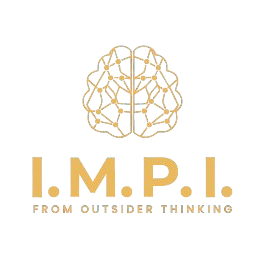Scenario:
A mid-sized tech company experienced growing tension among departments due to communication breakdowns, unclear roles, and competing priorities. The lack of cross-departmental collaboration led to missed project deadlines, employee dissatisfaction, and reduced overall productivity.
The Challenge:
How could the organization rebuild trust among teams, foster collaboration, and create a sustainable communication framework to address current and future conflicts?
Application of the SANGOULA Framework within the I.M.P.I. ™ Model
Idea
The core idea was to develop an environment where employees across all levels felt heard, valued, and empowered to communicate openly. This required aligning goals across departments, fostering mutual respect, and ensuring transparency in decision-making processes.
Model
The SANGOULA Framework provided the following structure:
- Unity: Focus on the company’s overarching goals to align departments.
- Ethics and credence: Create a culture of honesty, trust, and integrity in communications.
- Support systems: Develop formal communication channels and mediation protocols to resolve disputes.
Protocol
Detailed processes were designed to operationalize the framework:
- Cross-departmental collaboration meetings: Monthly forums where teams discussed shared goals, resolved conflicts, and aligned strategies.
- Active listening training: Workshops to train employees and managers in empathetic listening and conflict resolution.
- Transparent role definitions: Clearly delineate responsibilities to avoid overlaps and miscommunication.
- Feedback mechanisms: Anonymized surveys and suggestion tools to allow employees to voice concerns without fear of judgment.
Implementation
- Step 1: Communication forums: Weekly meetings were implemented for project teams to discuss bottlenecks and collaborate on solutions.
- Step 2: Mediation process: A neutral task force of senior managers was created to address inter-departmental disputes.
- Step 3: Cultural shifts: Leadership emphasized and modeled Sangoula values—ethics, integrity, and mutual respect—in day-to-day operations.
- Step 4: Monitoring and evaluation: Key performance indicators (KPIs) were established to track the success of collaboration efforts, including project completion rates and employee satisfaction scores.
Outcome
Quantitative Results:
- Cross-departmental projects saw a 25% improvement in on-time delivery within six months.
- Engagement surveys showed a 40% increase in employees reporting satisfaction with workplace communication.
Qualitative Results:
- Employees felt empowered to share ideas and concerns without fear of judgment or retaliation.
- Departments began collaborating proactively, fostering a sense of shared ownership over the company’s goals.
Strategic Takeaway
This case illustrates how the SANGOULA Framework, applied within the I.M.P.I. ™ Model, creates a professional culture that prioritizes ethical communication and collaboration. By fostering mutual respect and aligning collective efforts, organizations can not only resolve conflicts but also unlock untapped potential, ultimately achieving greater innovation and success.
